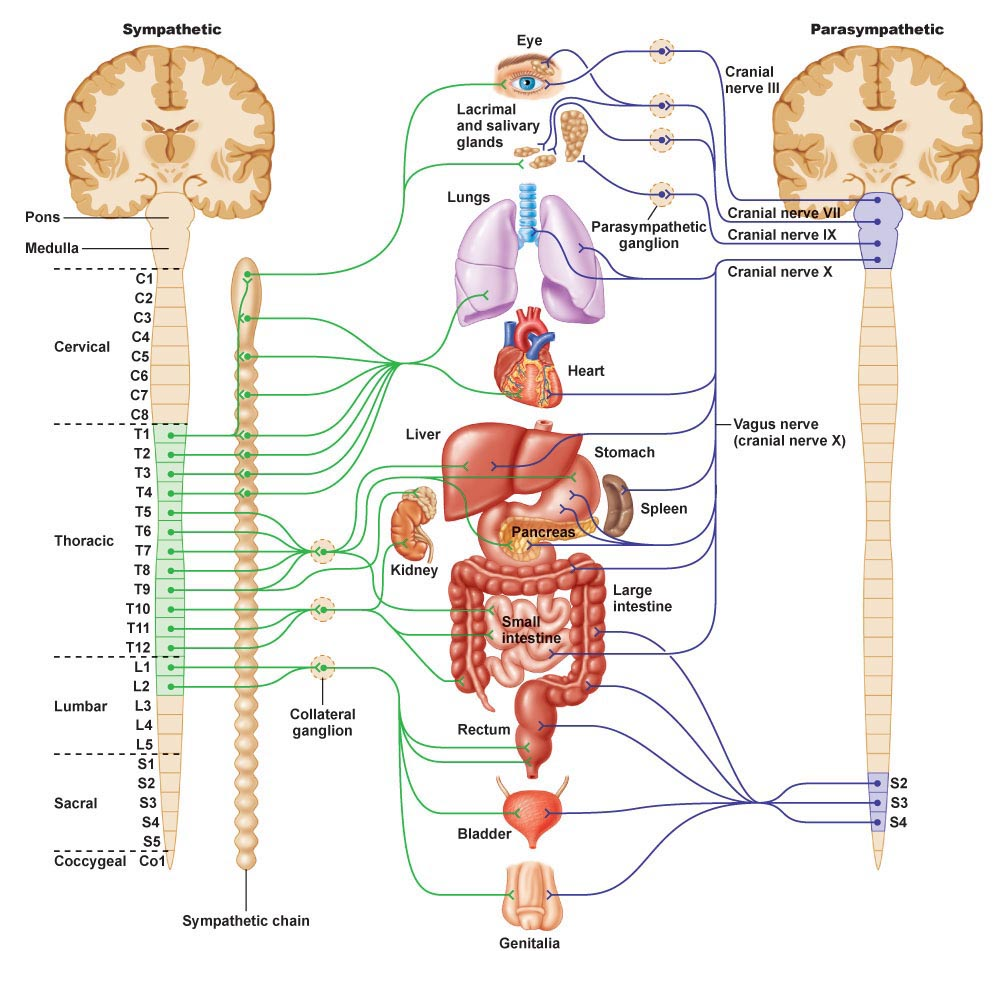Autonomic nervous system (ANS) function
The autonomic nervous system (ANS) or visceral nervous system or involuntary nervous system is the section of the peripheral nervous system which acts as a control system functioning mostly below the level of consciousness, and control visceral functions. The ANS affect digestion, heart rate, salivation, respiratory rate, pupillary dilation, perspiration, micturition, and sexual arousal. Most of the autonomous functions are instinctive though a number of ANS actions can work beside a few degree of conscious control. Everyday illustrations involve swallowing, breathing, and sexual arousal, and in few cases functions like heart rate.
In the brain, the ANS is situated in the medulla oblongata in the lower brainstem. The medulla's main ANS functions involve respiration, cardiac regulation (i.e., the cardiac control centre), vasomotor activity (the vasomotor centre), and certain reflex actions (like coughing, vomiting sneezing, and swallowing). These then subcategorize into other regions and are also linked to ANS subsystems and nervous systems external to the brain. The hypothalamus, merely above the brain stem, acts as an integrator for the autonomic functions, acquiring ANS regulatory input from the limbic system to do so.

The ANS is classically subdivided into two subsystems: the parasympathetic nervous system (PSNS) and sympathetic nervous system (SNS) that operate separately in few functions and interact co-operatively in others. In many situations the two have "opposite" actions where one activates a physiological response and the other restrains it. An older simplification of the sympathetic and parasympathetic nervous systems as "excitory" and "inhibitory" was overturned due to the most exceptions found. A more modern characterization is that the sympathetic nervous system is a "rapid response mobilising system" and the parasympathetic is a "more slowly activated dampening system", although still this has exceptions, like in sexual arousal and orgasm where both play a role. The whole nervous system is also s considered section of the autonomic nervous system, and at times considered a self-governing system.
ANS functions can usually be divided into sensory (afferent) and motor (efferent) subsystems. In both there are inhibitory and excitatory synapses among neurons. Relatively lately, a third subsystem of neurons which have been named 'non-adrenergic and non-cholinergic' neurons (as they use nitric oxide as a neurotransmitter) have been explained and found to be integral in autonomic function, mainly in the gut and the lungs.